The missile potential of the Islamic Republic of Iran (Part 1)
In the comments to the recent series of articles devoted to the Iranian air defense system, the readers of the Military Survey expressed the wish that a similar review be published on Iranian missiles designed to destroy ground and sea targets. Today, those who are interested in this topic will have the opportunity to get acquainted with history the creation of Iranian ballistic missiles.
The first operational-tactical missiles appeared in Iran in the second half of the 80-s, these were North Korean copies of the Soviet 9K72 Elbrus complex with the P-17 rocket (GRAU index - 8K14). Contrary to widespread misconception, this type of OTRK was never delivered to the DPRK from the USSR. Apparently, the Soviet leadership, given the close North Korean-Chinese ties, feared that Soviet missiles could get into the PRC. However, in 1979, North Korea was able to circumvent this ban by purchasing three P-17E missiles in Egypt. Also, Egyptian experts helped prepare the calculations and handed over a set of technical documentation.
On the basis of the missile complexes received from Egypt in the DPRK, they proceeded to the forced creation of their own OTRK. This was facilitated by a simple and understandable for the North Koreans rocket design, created by the technologies of the mid 50-s. All necessary to play the rocket P-17 base in the DPRK was available. Since the middle of 50, thousands of Koreans have been trained and trained in the USSR, and with the help of the Soviet Union, metallurgical, chemical and instrument-making enterprises were built. In addition, in North Korea, Soviet-made air defense missile systems and anti-ship missiles with liquid-propellant engines, which used the same components of fuel and oxidizer as in the P-17 rocket, were already in service. We must pay tribute to the North Korean scientists and designers, they knowingly ate their own bread and the tests of the first rockets at the Musudanni range began in 1985, only 6 years after they became acquainted with the export version of the Soviet OTRK. Certain difficulties have arisen with the control system, the unreliable operation of the magnetic semiconductor counter-decisive device of the automatic stabilization machine did not allow for achieving stable firing accuracy. But in the end, the DPRK managed to create its own analogue of the automation system, although less reliable and accurate than Soviet equipment. Already in 1987, in the Pyongyang factory number 125, it was possible to bring the rate of release of the missiles, which received the designation “Hwaseong-5”, to 8-10 units per month. According to expert estimates, about 700 missiles were built in the DPRK. Iran was the first foreign buyer of North Korean complexes.
According to its characteristics, the North Korean counterpart was very close to the famous Scud-B. According to the reference data, “Hwason-5” with a launch weight of 5860 kg could have thrown a warhead weighing about 1 tons to a distance of up to 320 km. In this case, observers noted that the reliability and accuracy of the destruction of missiles made in the DPRK, was worse than the Soviet prototype. However, it is quite combat-ready weapon against areal targets such as airfields, large military bases or cities. What was not so, has long been confirmed by Hussites, who launched rocket attacks on Saudi objects. The greatest threat can be posed by missiles equipped with "special" or chemical warheads.
North Korea, where the independent production of OTRK was established, became the main supplier of missiles for Iran. But the first Soviet-made P-17E missiles came to Iran, most likely from Syria and Libya. Together with missiles, Iran imported 9P117 launchers on the four-wheel wheeled chassis of the MAZ-543А. Having received several hundred OTRKs, the Iranian calculations used “Hwason-5” at the final stage of the Iran-Iraq war during the “war of cities”. When the warring parties, exhausted during the fighting, struck at major cities. He couldn’t have any impact on the situation on the front, exchanging missile strikes, and led only to civilian casualties.
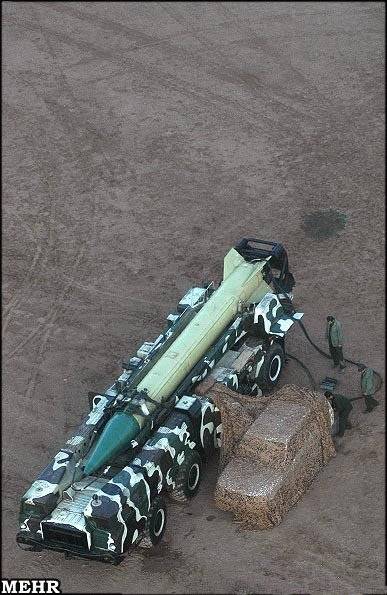
At the end of the 80-x missiles P-17 and the copies created on their base were already outdated, refueling with toxic fuel and a caustic oxidizer, requiring the use of special protective equipment, caused a lot of trouble. The handling of these components has always been associated with a high risk. After the oxidizer had been drained, a washing and neutralization of nitric acid residues in the tank and pipelines was required to conserve the life of the rocket. But, despite the difficulties of operation, the relative simplicity of the design and low cost of manufacture, with acceptable characteristics of range and accuracy, this primitive by modern standards rocket is in service in a number of countries so far.
After the end of the Iran-Iraq war, cooperation between Iran and the DPRK in the development of rocket technologies continued. With the help of the North Koreans in the Islamic Republic, they created their own version of the Soviet P-17. The rocket, known as Shahab-1, had the same characteristics as the prototype. According to American data, the production of ballistic missiles in Iran began even before the end of the war with Iraq. Following the first option, in the middle of the 90, the Shahab-2 model followed.
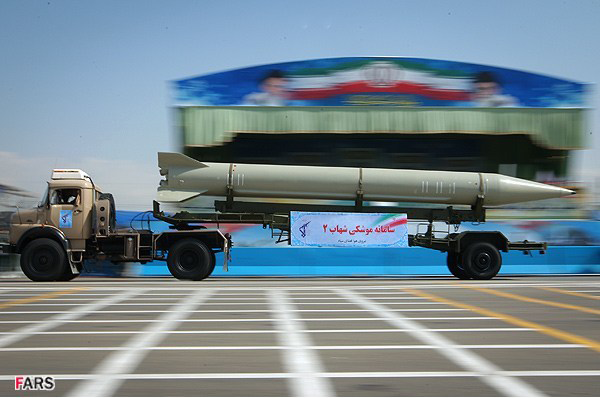
According to its scheme, the rocket did not differ from Shahab-1, but thanks to the increased fuel and oxidizer reserves by 200 kg and the forced engine, the launch range reached 700 km. However, a number of experts suggest that such a range can be achieved with a lightened warhead. With a standard warhead, the range will be no more than 500 km. According to some reports, the Shahab-2 is nothing but the North Korean "Hwason-6". Currently, Iran has several dozen mobile launchers and up to 250 Shekhab-1 / 2 missiles.
25 September 1998 of the year during the military parade was shown Shahab-3, largely repeating the North Korean No-Dong. According to the high-ranking Iranian military, this rocket with a liquid-propellant engine is capable of delivering a 900 kg warhead to the 1000 km range. Following the Shahab-3, modifications of the Shahab-21С and Shahab-3D were adopted already in the 3 century. Although during the tests that began in the 2003 year, the rockets often exploded in the air, by the 2006 year, according to Iranian data, the launch range was able to reach the 1900 km. In this case, the missiles can be equipped with a cluster warhead containing several hundred fragmentation and cumulative submunitions. Shahab-3 are classified as medium-range ballistic missiles, and can attack targets in Israel and the Middle East.
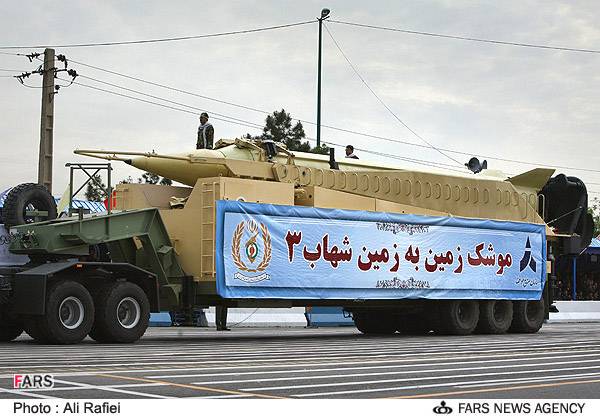
If for the “Shehab-1” and “Shehab-2” units, a chassis based on the MAZ-543А was used, then “Shehab-3” missiles are moved in a closed trailer. On the one hand, this facilitates masking, but on the other hand, the permeability of the towed conveyor is not very large. In 2011, there was confirmed information that OTR "Shehab-3" with an increased launch range is placed not only on mobile transporters, but also in disguised fortified mine launchers.
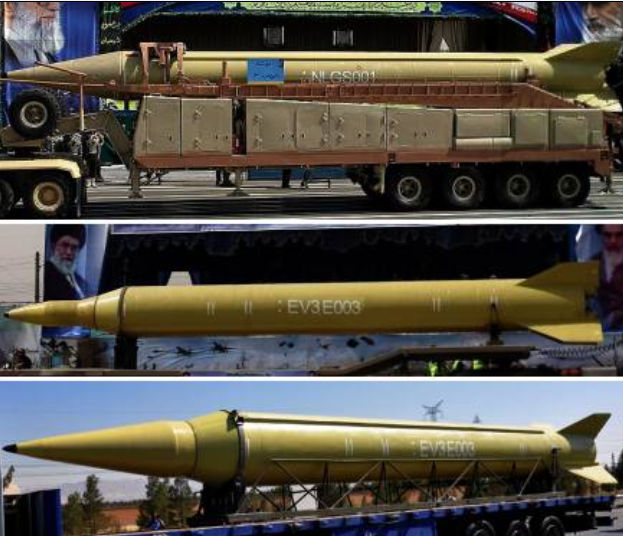
According to information published in the Iranian media, in the “Shehab-3” missiles built after 2006, thanks to the use of the new control system, the QUO 50-100 meters were achieved. It is not known whether this is true, but most Western experts agree that the actual deviation from the aiming point may be 10-20 times as much as stated. On the Shahab-3D modification, an engine with an adjustable thrust and deflecting nozzle is used. This allows you to change the trajectory of the rocket and makes it difficult to intercept. Late modifications "Shehab-3" to increase the range of start-up have the shape of the head, which resembles a baby bottle or felt-tip pen.
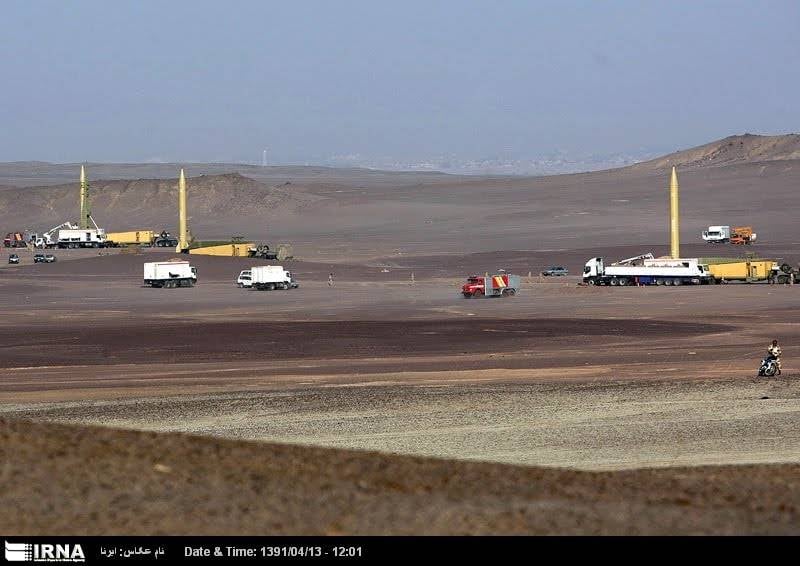
2 November 2006 of the year in Iran began large-scale military exercises, which lasted 10 days, during which dozens of missiles were launched, including Shehab-2 and Shehab-3. It is believed that the Iranian industry is able to produce 3-4 missiles "Shahab-3" per month and in the armed forces of the Islamic Republic can be 40-50 transporters and up to one hundred and fifty missiles of this family. A further option for the development of liquid missiles of the Shahab-3 family was a medium-range ballistic missile Ghadr.
In the photos taken during the military parade in Tehran, it is clear that the new MRBD is longer than the Shehab-3, and may have a launch range longer than 2000 km. But the main difference from the early models was the abbreviated pre-launch preparation. If an 3-2 hour is required for the transfer of Shehab-3 from a marching to a combat position and preparation for launch, then Gadr can start within 30-40 minutes after receiving an order. It is possible that in the rocket of this modification it was possible to proceed to the "ampu lating" of the components of the fuel and oxidizer.
Although “Gadr”, like “Shehab”, is largely based on North Korean rocket technologies, Iranian specialists from ShIGH (Shahid Hemmat Industrial Group) managed to significantly improve the basic design. The trials of the MRHP Ghadr began in the 2004 year. In 2007, an improved version of Ghadr-1 appeared, which, apparently, was put into service.
August 20, 2010 Iranian news Irna reported successful tests of the “new generation rocket” Qiam-1. This ballistic missile is more compact than the Shahab-3, and, apparently, is intended to replace the OTP Shahab-1 and Shahab-2. It is noteworthy that with dimensions similar to the early Iranian OTP, the Qiam-1 does not have external aerodynamic surfaces. This suggests that the control and stabilization of the rocket occurs with the help of a deflectable nozzle and gas rudders.
Range characteristics and weight of the Qiam-1 warhead are not disclosed. According to expert estimates, the launch range of this missile does not exceed 750 km with the weight of the 500-700 warhead kg.
Since mobile launchers for OTR and BRSD are highly vulnerable, many rocket bases with capital shelters have been built in the Islamic Republic. Part of the Iranians use the North Korean and Chinese experience, having built several long tunnels. The rockets in these tunnels are inaccessible for destruction using air attack weapons. Each tunnel has several real and false exits, and it is extremely difficult to fill each one of them, as well as to destroy all concrete bunkers with one blow. The most large-scale complex with capital shelters was built in the province of Qom, 150 km south of Tehran. Here in the mountainous area on the site 6х4 km, more than 300 bunkers, dozens of tunnel entrances and dumped launch pads were built. According to Iranian representatives, such missile bases, although smaller, are scattered throughout the country, there are only 14 underground missile systems in Iran.
This was first officially confirmed by 14 on October 2015 of the year, when a video was published in which Brigadier General Amir Ali Hajizade, commander of the aerospace forces of the Islamic Revolutionary Guard Corps, visited the underground missile system.
Some underground structures, where ballistic missiles are stored and maintained, are of such size that launch is possible through specially punched holes in the arches, which are usually covered with armor covers and camouflaged. In the 2016 year, after aggravation of relations with Saudi Arabia, it was stated that the storages of rockets were overcrowded, thus the authorities of the Islamic Republic hinted that they could get rid of the surplus by launching rockets in Riyadh.
In addition, the Iranians are constantly playing "cat and mouse" by moving disguised trailers with medium-range missiles around the country at night. To say for sure, this is a false goal or real, it is impossible. To launch ballistic missiles in Iran prepared a lot of capital positions. Often, converted sites for the deployment of obsolete Chinese air defense systems HQ-2 (Chinese version С-75) or concreted sites near the rocket garrisons are used for this. When starting from a previously prepared position, the pre-launch preparation time is reduced, and there is no need to make a topographical reference to the terrain.
A typical example of such an approach is the rocket garrison near the town of Sardraud in Eastern Azerbaijan. Here, before 2003, a part of the air defense was stationed, where the HQ-2 complexes were in service.
In 2011, the military base that was used to store obsolete weapons and ammunition was reconstructed, new large-sized hangars and recessed reinforced concrete shelters were built here. The dilapidated position of the HQ-2 ADMS was also put in order. The satellite images show that, starting from the 2014 year, the 2-3 BRSD combat position is constantly in position.
On the basis of the Shahab-3 ballistic missile, the Iranian Safir launch vehicle was created. The first successful launch of the Iranian satellite took place on 2 on February 2009 of the year, when the carrier rocket Safir launched the Omid satellite into orbit at an altitude of 245 km. 15 June 2011, the upgraded Safir-1В rocket delivered the Rasad spacecraft. 3 February 2012 of the year to the near-earth orbit with the same carrier was delivered to the satellite "Navid". Then luck turned away from the Iranian rocket engineers, the next two Safir-1В, according to satellite imagery, exploded on the launch pad or fell immediately after takeoff. A successful launch took place on February 2 2015, when the Fajr satellite was delivered to orbit. According to Iranian data, this device is capable of maneuvering in space, for which gas generators are used.
Although the Iranians are very proud of their achievements, these starts have no practical significance and are still experimental. A two-stage carrier rocket "Safir-1В" with a launch mass of about 26 000 kg can launch a satellite weighing about 50 kg into orbit. It is clear that such a small-sized apparatus cannot work for a long time and is unsuitable for reconnaissance or retransmission of a radio signal.
High hopes in Iran are connected with the new carrier Simorgh (Safir-2). The rocket with a length of 27 meters has a starting mass of 87 tons. According to the design data, Simurg should put into orbit 500 km in height a load of 350 kg. The first flight tests of the carrier took place on 19 on April 2016 of the year, but their results were not published. The United States expresses great concern about the creation of missiles with such characteristics in Iran, since in addition to launching satellites into orbit, carriers of this class may well be used to deliver warheads overseas. However, when using Simurg as an ICBM, it has a significant drawback - a long preparation time for the launch, which makes it extremely unlikely to be used as a means of retaliation.
All launch vehicle launches and most of the test launches of the Shehab and Gadr MRSD were carried out from the launch sites of the testing ground in the Semnan province.
A few kilometers to the northeast of the launch site of the Safir LV, two large launch sites were built for heavier missiles. Apparently, one of them, where there are tanks for storing liquid fuel and an oxidizer, is intended for the Simurg launch vehicle, and the other for testing solid-propellant ballistic missiles.
Speaking about the development of Iranian missiles, one cannot fail to mention such a person as Major General Hassan Terani Moghaddam. As a student, Moghaddam took an active part in the 1979 Islamic Revolution of the year. After the start of the Iran-Iraq war, he joined the Islamic Revolutionary Guard Corps. Moghaddam, unlike many religious fanatics, being an educated person, did a great deal to strengthen the Iranian artillery and rocket forces. Under his leadership, the first combat use of Iranian ballistic missiles took place in 1985, after which he was appointed commander of the missile units. On the initiative of Moghaddam, the development of the first Iranian Naze'at solid-fuel tactical missile and the reproduction of North Korean liquid missiles began. In the 90-ies, Moghaddam focused on the creation of missiles capable of reaching the territory of Israel and the US military bases in the Middle East region. At the same time, he sincerely believed that only the presence of long-range ballistic missiles equipped with non-conventional warheads in the future will ensure the sovereignty and security of the country. In addition to liquid-propellant rockets, more simple and cheap tactical solid-fuel Zelzal rockets were developed, designed to hit targets in the enemy’s operational rear. The experience gained in the creation of solid-fuel missiles with a range of 80-150 km, allowed in the future to proceed to the design of Sejil MRSD. Simultaneously with the creation of missiles designed for its own armed forces, Moghaddam had a hand in that the missiles that were at the disposal of the militants of the Shiite Hezbollah movement became much more perfect. Terani Moghaddam died in the very dawn of 12 forces on November 2011 of the year. While visiting a group of Iranian high-ranking military rocket arsenal of Modares, in the vicinity of Tehran, a powerful explosion occurred there. Seventeen people died together with Moghaddam.
The main enterprises of the Iranian rocket production company SNIG, where rockets are being assembled, are located in the suburbs of Tehran. At the beginning of 2015, a report was shown on Iranian television from the ceremony of handing over the Ghadr-1 and Qiam-1 missiles to the armed forces. As stated by the Iranian Defense Minister, Brigadier General Hossein Dehgan, the Iranian industry is able to fully meet all the needs of the army, and in the event of an attack on the country, the aggressors will receive a crushing response.
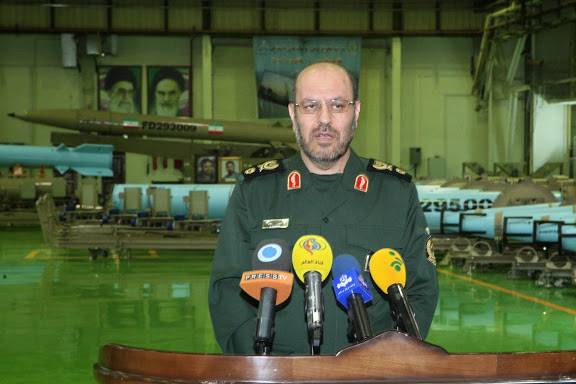
However, the further potential for improving liquid rockets based on the Soviet P-17 design has been almost exhausted. In modern conditions, the use of liquid tactical and medium-range ballistic missiles looks like a real anachronism. Refueling with poisonous fuels and caustic inflammable combustible oxidants not only increases the preparation time for launch, but also makes the missiles themselves dangerous for calculations. Therefore, from the middle of 90-x in the IRI, work was carried out on the creation of solid-fuel missiles. In 2007, there was information that a new two-stage solid-fuel medium-range missile was developed in Iran. A year later, it was announced the successful trials of the Sejil BRSD with a launch range of 2000 km. Finishing tests lasted until the year 2011, when it was announced that the upgraded version of the Sejil-2 was adopted.
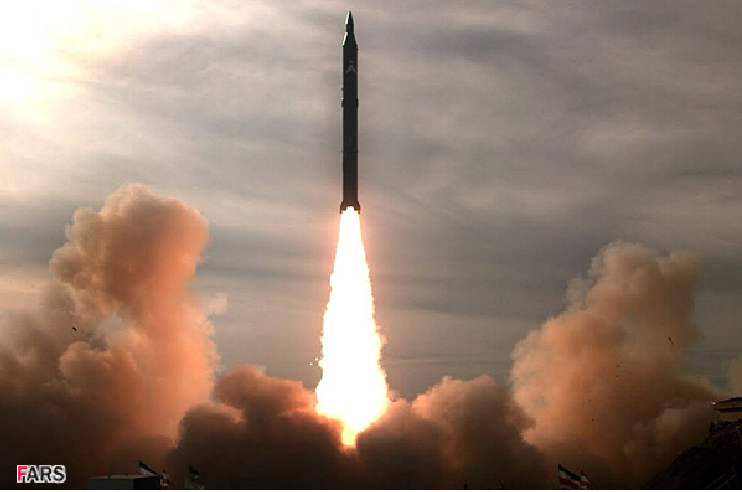
At the start of the 2011 of the year, in an inspection test, two Sejil-2 missiles delivered inert warheads to a remote region of the Indian Ocean, confirming the declared characteristics. A rocket weighing 23620 kg and a length of 17,6 meter was first shown at the 22 September 2011 military parade of the year. Just like the Shahab-3 MRSD, new missiles with solid-fuel engines are placed on a towed launcher. An important advantage of Segil is the shortening of prelaunch preparation several times as compared with the Shehab missiles, and solid propellant rockets are much simpler and cheaper to maintain. There is no reliable information on the scale and pace of deployment of the Segil MRSD. In Iranian television reports, a maximum of 4 launchers were simultaneously shown, but how many rockets the Iranian military actually has is unknown.
Many foreign observers believe that the Iranian leadership, devoting significant resources to the creation of combat missiles, is ahead of the curve. The Islamic Republic has already developed its own missile school, and in the future we can expect the appearance of ballistic missiles with intercontinental range. Simultaneously with the accelerated development of rocket technologies in Iran, until recently, the nuclear program was actively developing. Iran’s desire to possess nuclear weapons almost led to armed confrontation with the United States and Israel. Thanks to the efforts of international diplomacy, the Iranian "nuclear problem", at least, was formally able to translate into a peaceful plane. But, anyway, there is no doubt that the work on this topic in the Islamic Republic of Iran continues, albeit not as intensively as in the recent past. Already, Iran has reserves of highly enriched uranium, which creates prerequisites for the creation of nuclear explosive devices in the foreseeable future.
The Iranian top military-political and spiritual leadership in the past has repeatedly stated the need for the physical destruction of the state of Israel. Naturally, with this in mind, the Israelis are very keenly responding to attempts to create nuclear weapons and the improvement of Iranian missiles. In addition, Iran actively opposes itself to the Middle Eastern oil monarchies, which are entirely dependent on the United States. However, the United States and its allies refrain from attacking Iran, as a quick and bloodless victory over the armed forces of the Islamic Republic is impossible. Having no chances to win, Iran is quite capable of inflicting unacceptable losses on its opponents. And the available missile arsenals should play their part in this. Iranian ayatollahs, driven into a corner, may well give the order to strike with missiles, the warheads of which will be equipped with chemical warfare agents. According to the information published on the official website of the Foreign Intelligence Service of the Russian Federation, industrial production of blister and neuroparalytic poisons has been launched in Iran. In the case of the use of rockets by poisonous substances in American bases and large Middle Eastern cities, the consequences will be catastrophic. With high probability we can assume that Israel, subjected to chemical attack, will respond with a nuclear strike. It is clear that no one is interested in such a development of the situation, and the parties, despite the contradictions and outright hatred, are forced to refrain from rash steps.
In addition to operational-tactical and medium-range missiles, Iran has a significant number of tactical and anti-ship missiles. But this will be discussed in the next part of the review.
Based on:
http://svr.gov.ru/material/2-13-9.htm
http://www.nti.org/learn/facilities/285/
https://missilethreat.csis.org/missile/shahab-2/
http://www.wnd.com/2013/03/iran-confirms-secret-nuclear-quds-site/
http://www.uskowioniran.com/2014/03/irgc-asf-takes-mass-delivery-of-latest.html
http://www.telegraph.co.uk/news/worldnews/middleeast/iran/10229480/Iran-launch-site-likely-for-testin
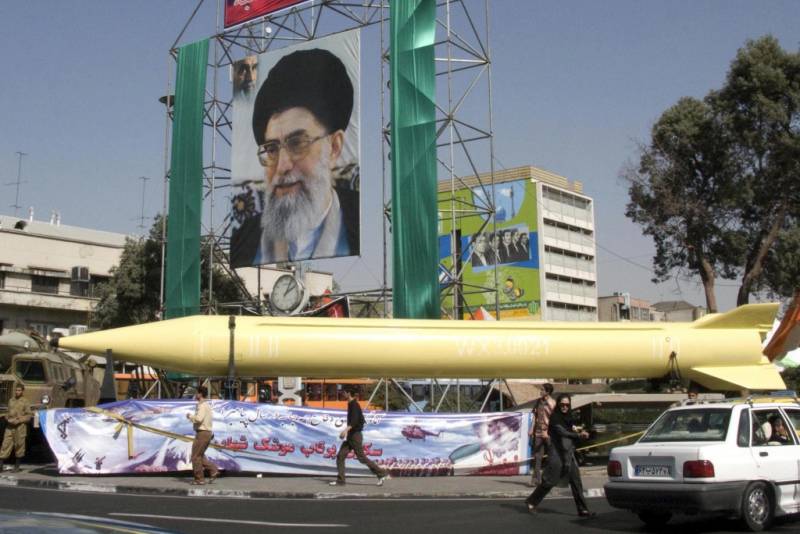
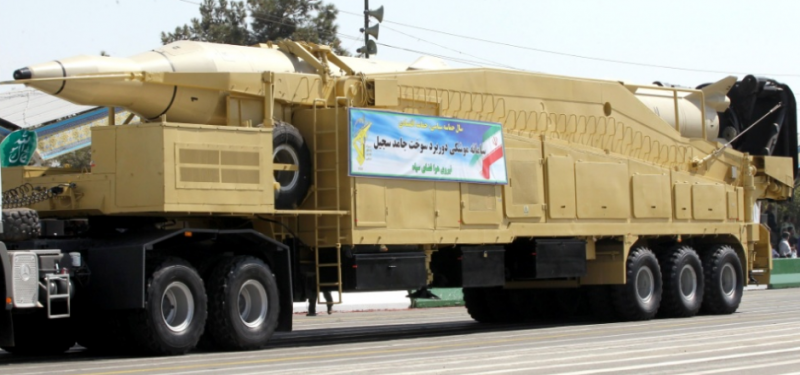
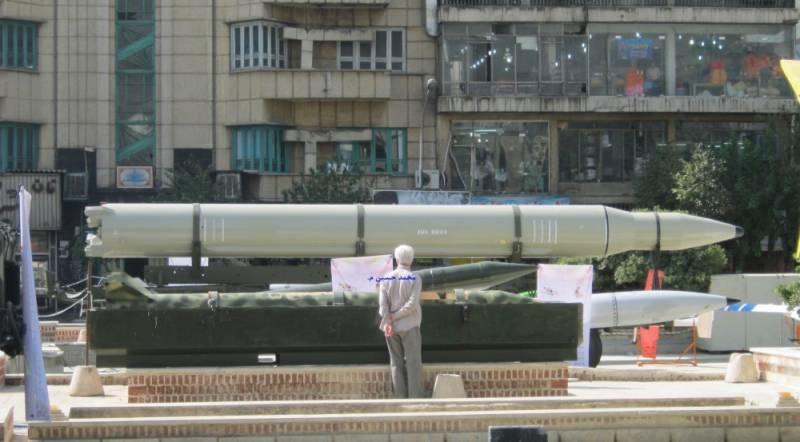
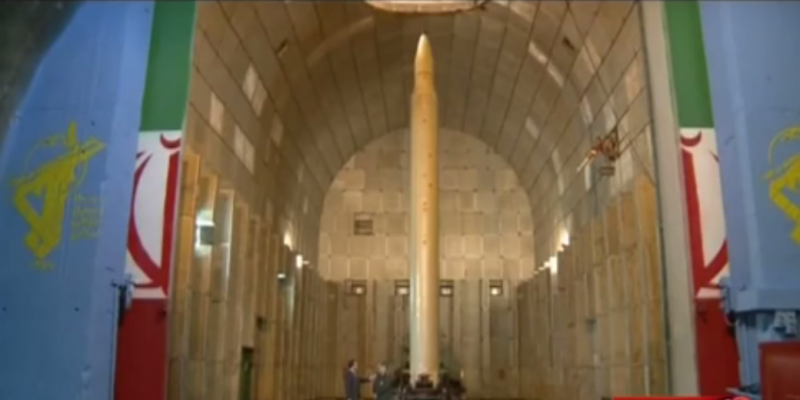
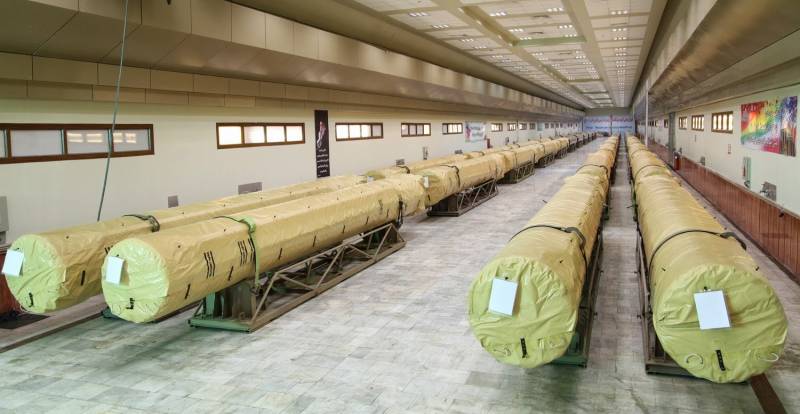
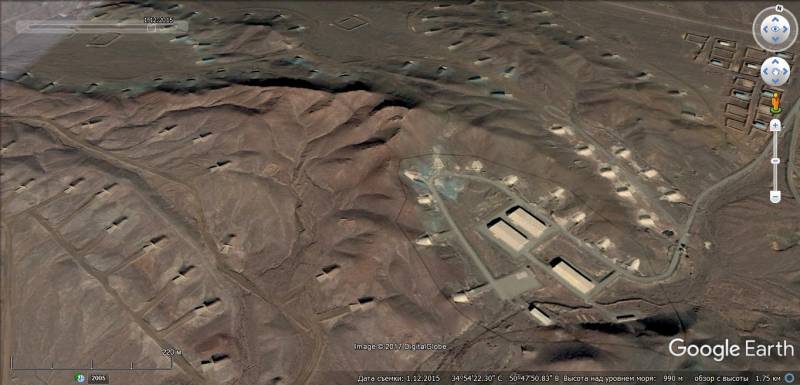
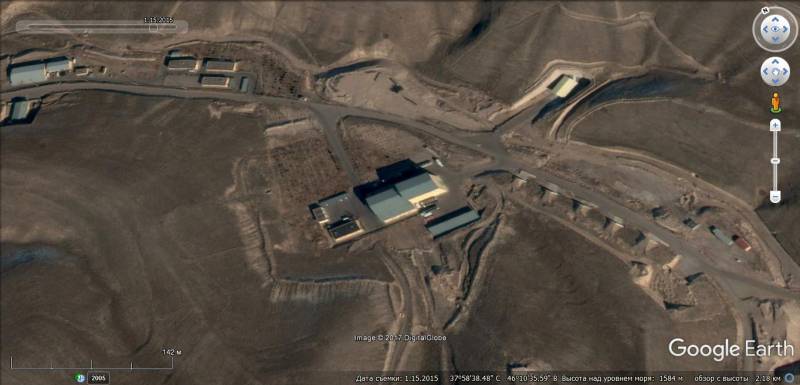
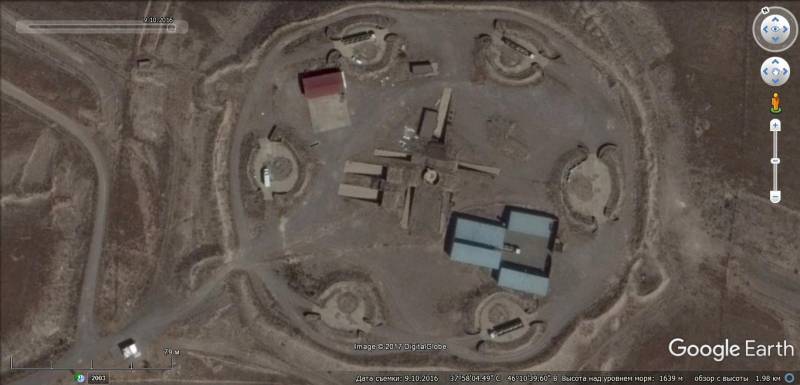
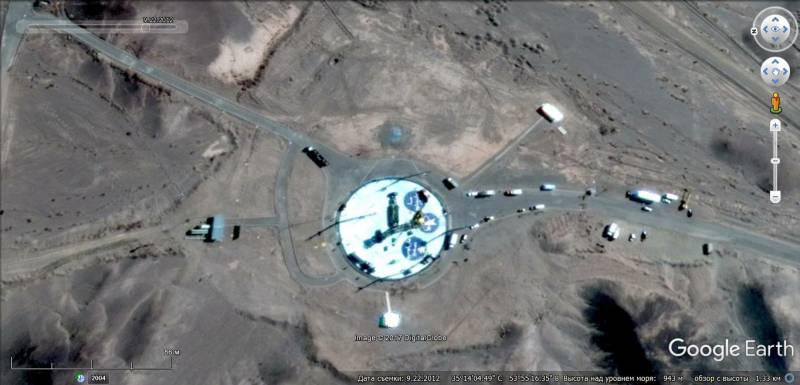
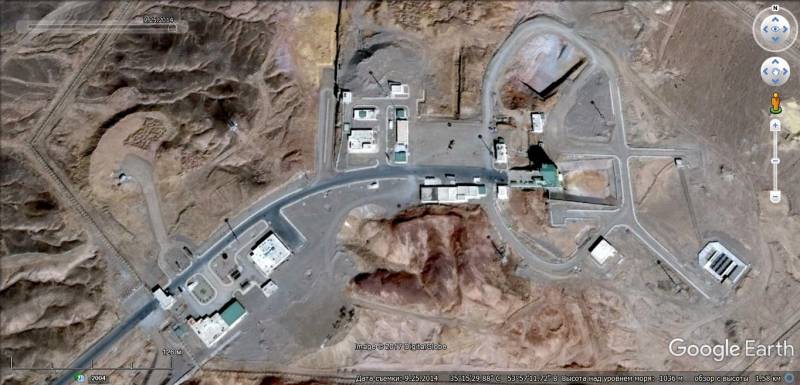
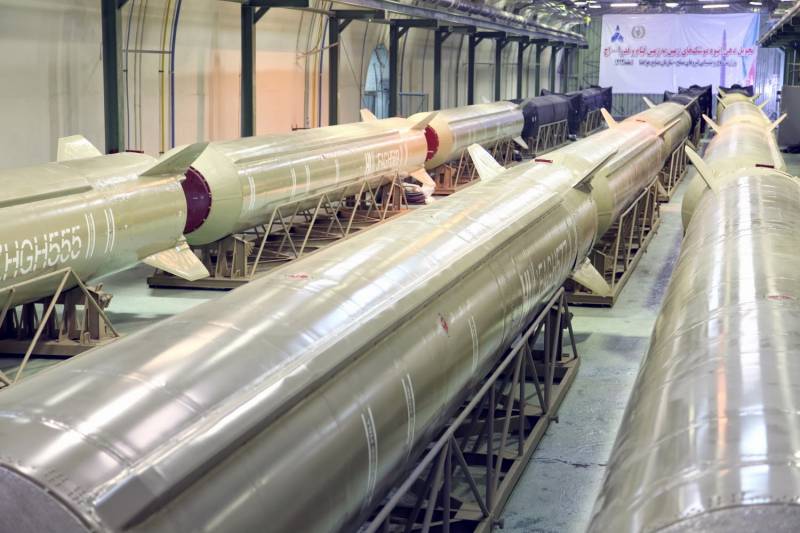
Information